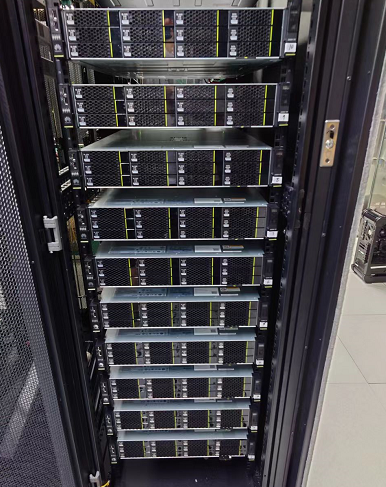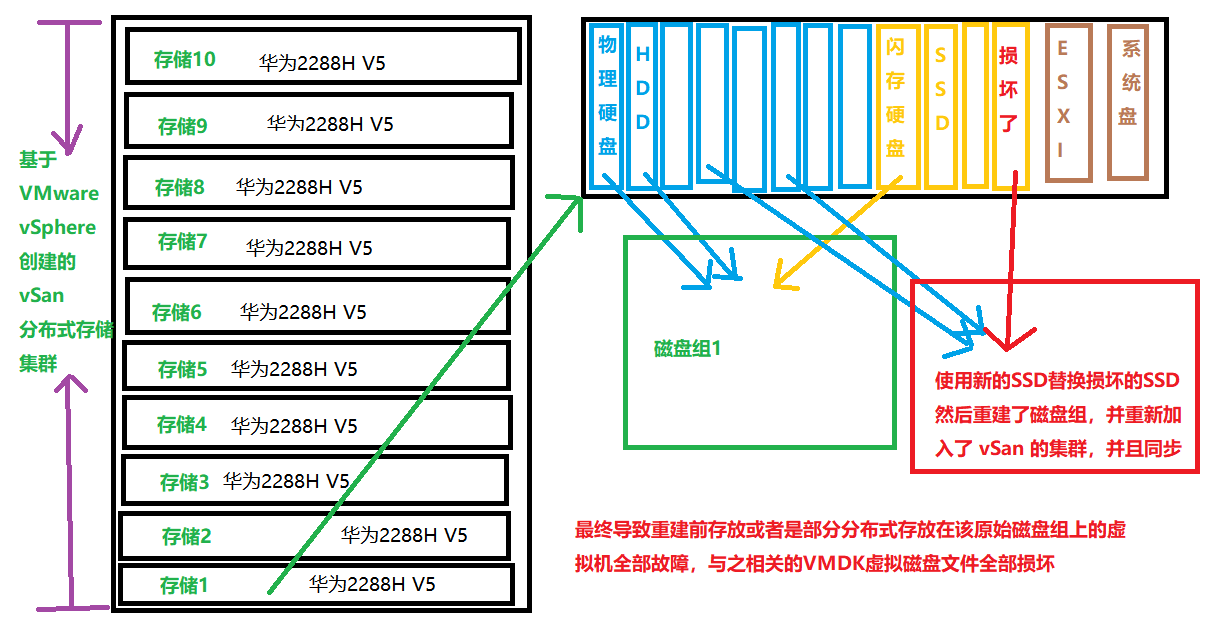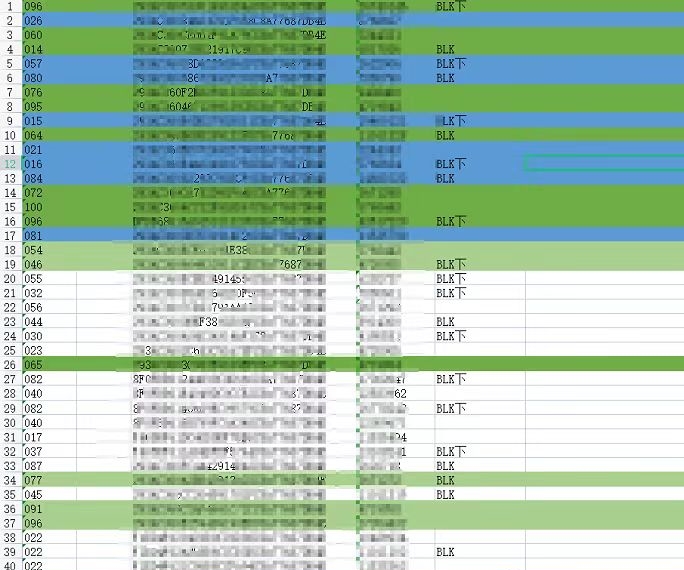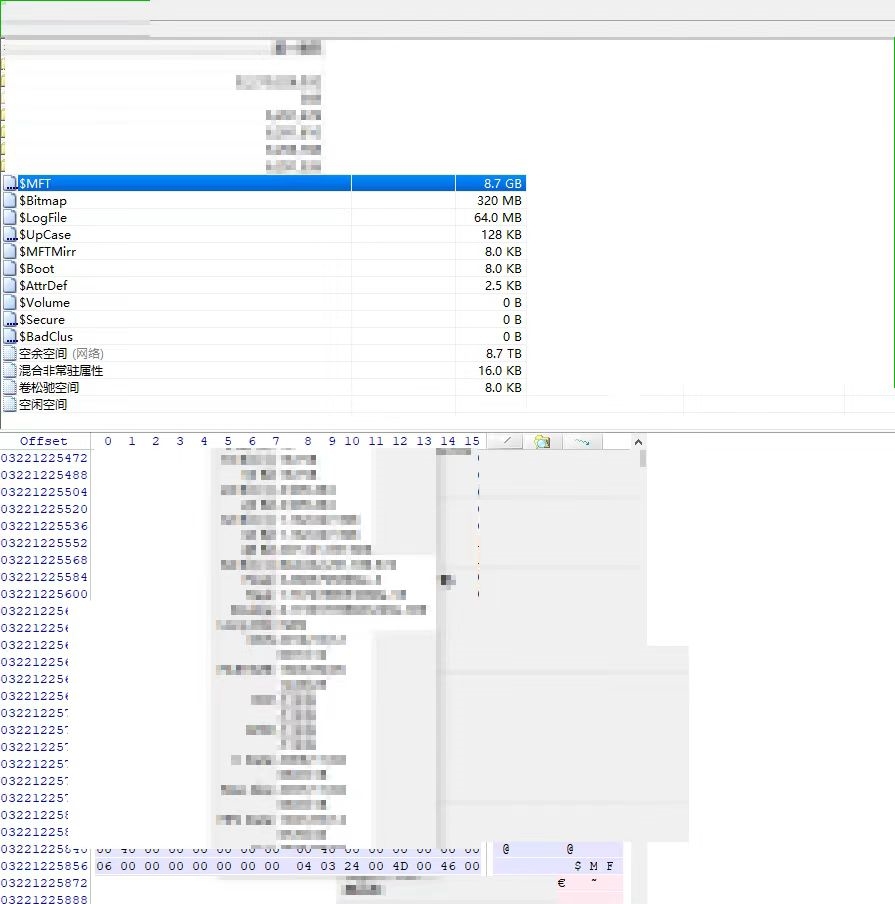Case description
recently, our company handled a vSAN hyper-converged architecture consisting of 10 HUAWEI OceanStor storage units. One of the storage flash disks failed, and the user removed it and replaced it with a new flash disk, then, the disk group where the flash disk is located is rebuilt, resulting in the loss of data of a virtual machine in the cluster that uses the 0 provisioning policy.

Solution
1. Case assessment
after on-site inspection, it is known that 10 storage units all use the same configuration, including 2 300GB ESXi system disks (RAID1),8 2TB HDD physical hard disks, and 4 480GB SSD flash disks, A virtual disk file with ID *** is lost after the disk group is rebuilt. The size of the virtual disk is 20TB. ESXi system disks are independent, isolated from HDD physical disks and SSD flash disks, do not participate in data storage, and use the common VMFS partition structure; two HHD and one SSD constitute a disk group. In this case, when creating a cluster, the user chooses single-point storage and enables vSAN, all three hard disks adopt the vSAN partition structure. Therefore, two HDDs in the same disk group belong to the SSDs in the disk group, but there is no direct data relationship.
The entire VMware vSphere controls multiple clusters. The faulty cluster uses vSAN distributed storage. The vSAN consists of 10 Huawei 2288H V5 storage devices, each storage unit consists of two HDDs (physical disks) and one SSD (flash disks). Each storage unit has four disk groups.

2. Recovery plan
to ensure data security, you need to take out all the 10 hard disks separately, perform complete sector images one by one, and then restore the image disks. After the images are completed one by one, use the VMware vSAN Data Recovery System independently developed by our company to scan the image files and extract the distributed data units stored on each hard disk. Before use, according to the virtual object ID, find the data distribution of the ID, find the fault domains and sub-fault domains that belong to the ID, and write the obtained information into the data in the root directory of the program. In the ini configuration file (clear and write data if any). Set the component storage path, and then select the mirrored disk files one by one, or directly select the directory where all the mirrored files are located. VMware vSAN Data Recovery System automatically scans scattered data units, and reconstruct the virtual disk file. After the data is extracted, use any software to expand the reconstructed file. After loading, you can access the file data in the virtual disk.


Case Summary
with the increasing amount of data storage, general storage is difficult to meet the needs of many large companies. Therefore, various virtualization platforms have emerged in data center servers. These platforms are lucky and easy to manage, we have developed some unique storage methods. The most common one is that distributed storage is a vSAN distributed storage architecture based on VMware vSphere ESXi virtual machines. A vSAN object can be considered as a volume or a logical volume. Each vSAN object that exists in data storage consists of multiple components, these components are distributed in disk groups on cluster hosts. In the process of recovering vSAN data, obtaining component information is the most critical because components are an important component of each object.


 Reprint
Reprint 